
Concept explainers
Draw Lewis structures for the following organic molecules: (a) methanol
Interpretation:
Lewisstructure for the given organic molecules are to be drawn.
Concept introduction:
The octet rule states that every element in a main group must have eight electrons in its valence shell in order to attain noble gas configuration.
Valence electrons are the electrons that are present in the last(outer) shell of an element.
Lewis dot symbols contain dotsthat provides information about valence electrons.
Lewis structures depict bonds as lines and lone pairs as dots.
Answer to Problem 120AP
Solution:
(a)
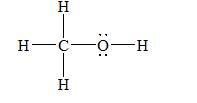
(b)
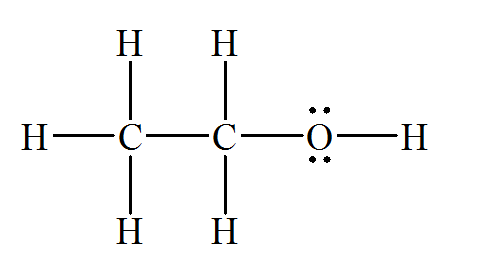
(c)

(d)
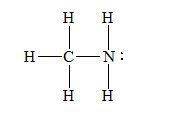
(e)
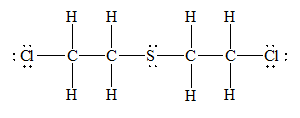
(f)
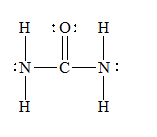
(g)
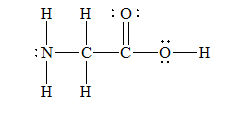
Explanation of Solution
a)Methanol (
There are a total 14 electrons in
The skeletal structure for
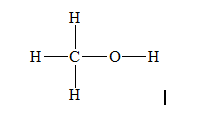
The Lewis structure for
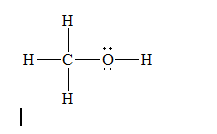
b) Ethanol (
There are a total 20 electrons in
The skeletal structure for
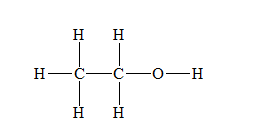
The Lewis structure for
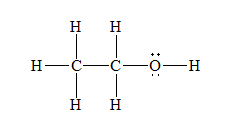
c) Tetraethyl lead (
There are a total 56 electrons in
The Lewis structure for

d) Methylamine,
There are a total 14 electrons in
The skeletal structure for
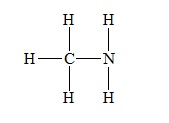
The Lewis structure for

e) Mustard gas, (
There are a total 44 electrons in
The skeletal structure for
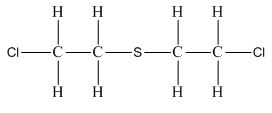
The Lewis structure for

Hence, the Lewis dot structure has beendrawn.
f) Urea (
There are a total 24 electrons in
The skeletal structure for
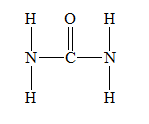
The Lewis structure for

Given information:
g) Glycine
There are a total 30 electrons in
The skeletal structure for
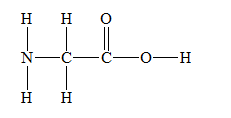
The Lewis structure for

Want to see more full solutions like this?
Chapter 8 Solutions
Chemistry
- Acetyl chloride, CH₃C(O)Cl, is used as a reagent for the acylation of salicylic acid in the synthesis of aspirin. Draw the Lewis structure of CH₃C(O)Cl (with minimized formal charges) and then determine if the molecule is polar or nonpolar. +arrow_forwardAluminum oxide (Al₂ O₃) is a widely used industrial abrasive(emery, corundum), for which the specific application depends onthe hardness of the crystal. What does this hardness imply about the magnitude of the lattice energy? Would you have predictedfrom the chemical formula that Al₂ O₃ is hard? Explain.arrow_forwardcarbon tetrachloride was formerly used in fire extinguishers for electrical fires.it is no longer used for this purpose because of the formation of the toxic gas phosgene,CL2CO.wRITE THE LEWIS STRUCTURES for the methane and ethane molecules.arrow_forward
- Draw the Lewis structure for the nitrate ion, NO3-, with formal charges on each atom and resonance structures.arrow_forward1. Draw the Lewis structure for H2O, CH4 (methane), and for NH3. 2. Write the Lewis structure of the following molecules: a. Ethylene, C2H4 b. Acetylene, C2H2 c. Carbon tetrachloride, CCl4 d. COBr2 (for the skeletal structure, C is bonded to O and Br atoms)arrow_forwardThe C¬O bond length in carbon monoxide, CO, is 1.13 Å, whereas the C¬Obond length in CO2 is 1.24 Å. Without drawing a Lewis structure, do you think thatCO contains a single, double, or triple bond?arrow_forward
- Write Lewis structures for the following: (a) H2CO (bothH atoms are bonded to C), (b) H2O2, (c) C2F6 (contains a C¬C bond), (d) AsO33- , (e) H2SO3 (H is bonded to O), (f) NH2Cl.arrow_forwardA liquid compound used in dry cleaning contains 14.5% C and 85.5% Cl by mass and has a molecular mass of 166 amu. Write the Lewis formula for the molecule.arrow_forwardGiven the bonds C N, C H, C Br, and S O, (a) which atom in each is the more electronegative? (b) which of these bonds is the most polar?arrow_forward
- Write all resonance structures of chlorobenzene, C6H5Cl, a molecule with the same cyclic structure as benzene. In all structures, keep the CCl bond as a single bond. Which resonance structures are the most important?arrow_forwardAn ionic compound has the following composition (by mass): Ca, 30.3%; N, 21.2%; O, 48.5%. What are the formula and name of the compound? Write the Lewis formulas for the ions.arrow_forward
 Chemistry: Principles and PracticeChemistryISBN:9780534420123Author:Daniel L. Reger, Scott R. Goode, David W. Ball, Edward MercerPublisher:Cengage Learning
Chemistry: Principles and PracticeChemistryISBN:9780534420123Author:Daniel L. Reger, Scott R. Goode, David W. Ball, Edward MercerPublisher:Cengage Learning Chemistry: The Molecular ScienceChemistryISBN:9781285199047Author:John W. Moore, Conrad L. StanitskiPublisher:Cengage Learning
Chemistry: The Molecular ScienceChemistryISBN:9781285199047Author:John W. Moore, Conrad L. StanitskiPublisher:Cengage Learning General Chemistry - Standalone book (MindTap Cour...ChemistryISBN:9781305580343Author:Steven D. Gammon, Ebbing, Darrell Ebbing, Steven D., Darrell; Gammon, Darrell Ebbing; Steven D. Gammon, Darrell D.; Gammon, Ebbing; Steven D. Gammon; DarrellPublisher:Cengage Learning
General Chemistry - Standalone book (MindTap Cour...ChemistryISBN:9781305580343Author:Steven D. Gammon, Ebbing, Darrell Ebbing, Steven D., Darrell; Gammon, Darrell Ebbing; Steven D. Gammon, Darrell D.; Gammon, Ebbing; Steven D. Gammon; DarrellPublisher:Cengage Learning Chemistry & Chemical ReactivityChemistryISBN:9781337399074Author:John C. Kotz, Paul M. Treichel, John Townsend, David TreichelPublisher:Cengage Learning
Chemistry & Chemical ReactivityChemistryISBN:9781337399074Author:John C. Kotz, Paul M. Treichel, John Townsend, David TreichelPublisher:Cengage Learning Introductory Chemistry: A FoundationChemistryISBN:9781285199030Author:Steven S. Zumdahl, Donald J. DeCostePublisher:Cengage Learning
Introductory Chemistry: A FoundationChemistryISBN:9781285199030Author:Steven S. Zumdahl, Donald J. DeCostePublisher:Cengage Learning




